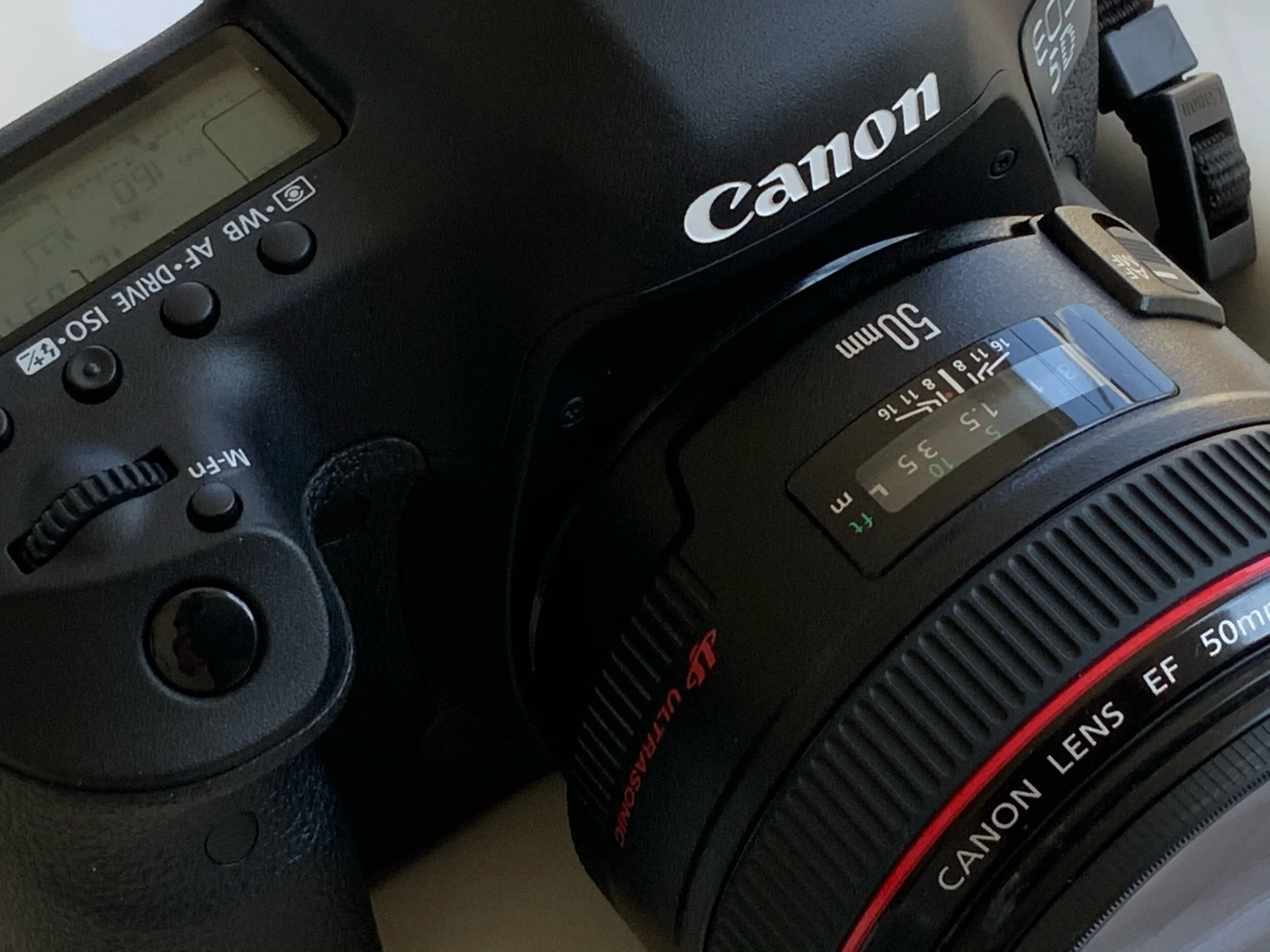
Camera, Lens & settings to learn photography
Camera Type
The best camera type to learn the basics of photography is one with an interchangeable lenses. This can be film single lens reflex (SLR), digital SLR (DSLR), or mirrorless camera. These cameras allow changing the settings described in the Basics I & II such as aperture, shutter speed, ISO, white balance and choosing metering modes.
If the DSLR camera offers the option to choose a custom white balance, that is recommended.
Cell phone cameras, point and shoot cameras with zoom lenses often don’t have enough settings you can change to learn, or see the differences in your picture, and many controls that are not readily at your fingertips. The composition tips in Basics I can be applied with any camera, including cell phone cameras, but for all other basics an SLR or DSLR will serve better.
Got a(n) (D)SLR camera?
Lens
The best type of camera lens to learn with is a 50mm fixed focal length lens. A 50mm lens renders an viewing angle similar to the human eye, and a very natural feeling of perspective. The 50mm lens references a 35mm film camera equivalent, or what is considered a full frame perspective on digital cameras. A 50mm with an f/2.8 is good enough, and more expensive lens are not necessary for a beginner. Many professionals admit to having their own favorite 50mm lens in their camera bag, and usually remember their first 50mm lens.
What is important for learning perspective, aperture, shutter speed and composition is that the lens should be fixed focal length of the lens. Zoom lens should be avoided by beginners. While zoom lenses quality are not as good optically as fixed focal length (non-zoom) lenses, more importantly, zoom lenses can easily tempt a photographer into a bad habit — to zoom in and out (only changes crop) instead of appreciating perspective. Zooming can impair your learning perspective and other basics. Use a 50mm lens. Period. (See Composition Tip 2 for more details.) A simple 50 mm lens helps build basic visualization skills. No zoom for you, ok?. Fixed lens for you, ok? A 50mm, right?
If you only have access to a Zoom lens, practice the Basics I (composition, aperture and shutter speed) on the widest setting only. Example with a 35-75mm zoom, shoot at 35mm only, for at least 100 pictures. (An inexpensive 50mm, used, with scratches will still help you learn the Basics better than an expensive zoom).
Crop factor is not important if you’re using a digital camera to learn the Basics, because you’re used to seeing the crop. The fixed focal length lens of a 50mm is your best lens, regardless of the digital camera’s crop factor.
Got a 50mm lens?
Basic Settings
Next to fixed focal length lens, a few camera settings are important for learning the Basics I & II skills. This recommendations may sound counter intuitive to experienced photographers, but can save a beginner photographers passion.
The recommendations are to manually set ISO. Set ISO to 400 to start. If in bright light ISO 200 or 100 are ok. Set ISO manually, then practice Basic I (composition, aperture, shutter speed). Automatic ISO will confuse you with aperture concepts. Remember to set ISO manually each time before shooting.
The second recommendation is use automatic white balance (AWB) for most of Basics I. AWB saves time, reduces struggling with other lighting sources and white balance settings. This applies to digital SLRs. For film SLRs, the nearest equivalent is the film choice you use, and daylight film for outside natural light photography is a good place to start. Daylight film at 400 ISO, with 36 exposures are good for practice. We are used to seeing things in color. (Yes, black and white film photography is fun too!)
Have you manually set ISO and AWB?
The more you shoot
The more you learn.
Have fun!
It matters.

